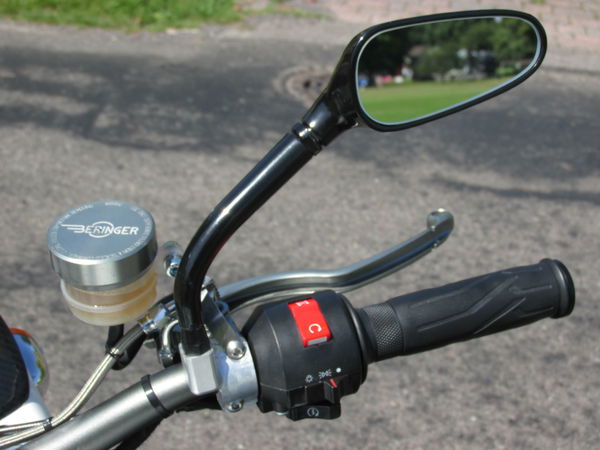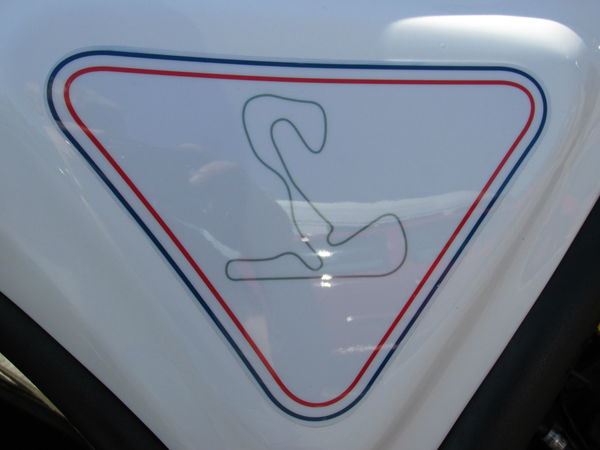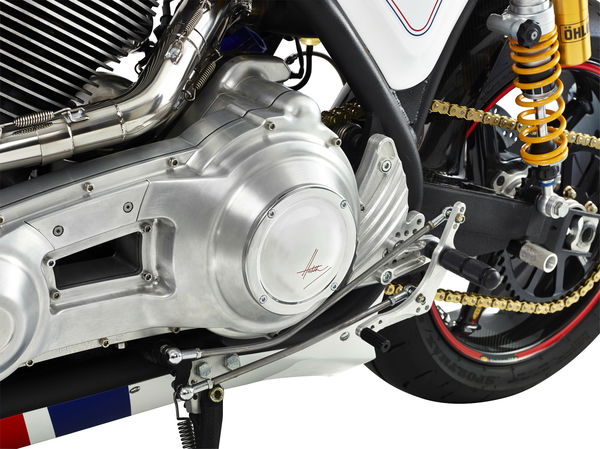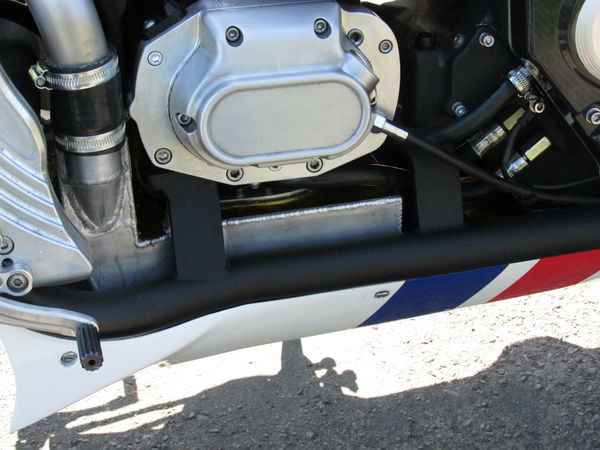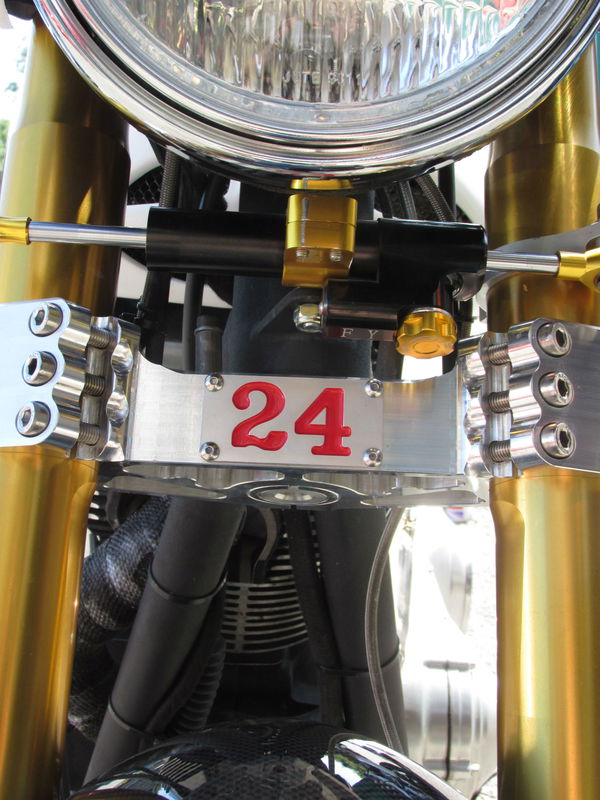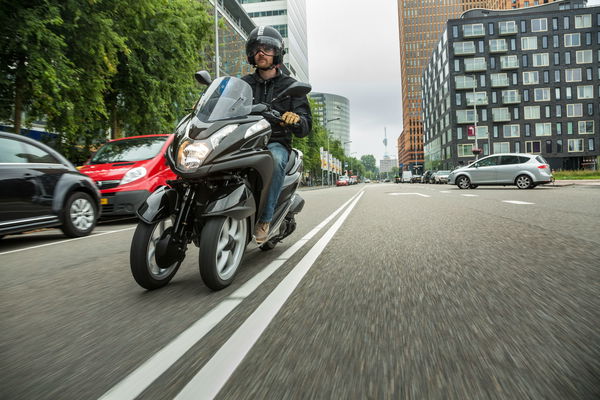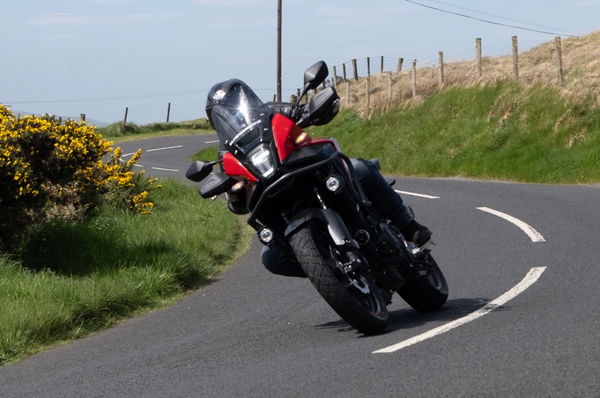World first test: Hesketh 24 review
Everyone notices a 106dB V-twin – especially the police

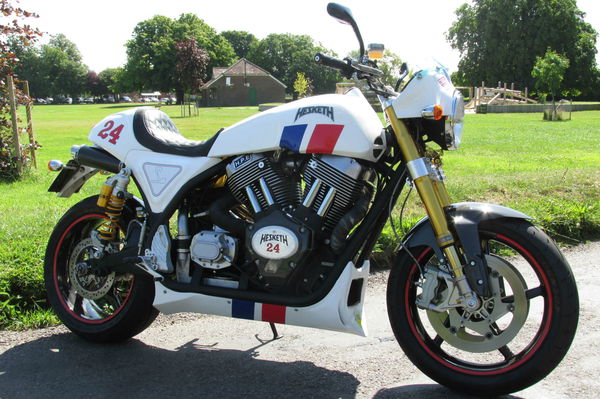
WHEREVER you look this year, someone seems to be reviving a historic British motorcycle marque.
The first new Brough Superior in 73 years is due to go on sale sometime soon, a 140hp, £50,000 V-twin called the SS100. Ariel has made its first motorcycle in over 50 years, the VFR1200-powered Ace, which starts from £20,000.
And today Hesketh allowed me to ride the first new bike from the marque in 32 years, called the 24.
At £35,000, it sits exactly halfway between the other two. Revived British marques are not cheap.
It takes its name from the number of Hesketh's Formula One car raced by James Hunt in the '70s, and the number of bikes that will be produced: just 24.
It's got an outrageously enormous American engine, an S&S 1950cc V-twin tuned for more torque than power, at 125hp and 144lbft.
It is not for the self-effacing.
According to Hesketh owner Paul Sleeman, the prototype I rode is one decibel too loud for approval limits, at 106dB. I could believe that, and so apparently could a policeman I passed while riding it.
He was sitting in his car at a roundabout, the way police do, and when I came round he pulled out behind me.
With some careful angling of the Hesketh's tiny mirrors, I could see him following, and tried to choose the best gear and engine speed to quieten the 24's mighty burble.
Low revs in a high gear? No, that was no good. He'd think there was an earthquake. High up the range, in a low gear? Christ no. Somewhere in the mid-range, then. Yes, there. Don't change gear. Don't speed up or slow down.
After a couple of miles he turned off, probably spotting the bike's trade plate and deciding he couldn't be bothered hearing my story. Maybe he'd only followed because he wanted to see the 24.
Once he'd gone I turned up the volume again.
The instrument panel consists of traditional analogue dials set in carbon-fibre, telling you your battery voltage, oil temperature and the time, but not your engine speed. There's no rev counter, and with an engine making peak torque at 3,000rpm and peak power at 6,000, you perhaps don't need one. Twist the throttle, have as much torque as you can eat, change gear and have some more. What are numbers and a needle going to bring to that?
Initially, the engine seemed a tad lumpy at very low revs, hesitating slightly when I pulled away. The clutch, from an automatic Cadillac, also slipped a couple of times as I released the lever, so drive momentarily wasn't there.
Both of these tendencies seemed cured once the engine warmed up. And does it warm up? In 26C heat on the roads around Hesketh's HQ in Redhill, Surrey, I could feel the heat radiating from those two air-cooled one-litre pots to my knees every time I stopped at a junction. Better to keep the air moving over those fins, and then you can't feel it.
On winding roads you can leave it in one gear, third or even second, and let that big lump of drive between 3,000 and 6,000rpm pull you from one bend to the next.
The steering feels heavy at low speed but changes character on the move. Hesketh have tried to position the centre-of-gravity low by putting a section of the fuel tank at the bottom of the steel-cradle frame and using a swing-arm which doubles as an oil reservoir. Rolling, the 24 hides its 250kg weight well, changing direction with relative ease. You could do the swerve exercise in the bike test on it, if you were crackers enough to buy a £35,000 Hesketh before even getting a licence.
The rearsets are positioned quite far back, even for rearsets. They're perhaps a couple of inches further aft in relation to the seat than a sports bike's pegs, so you have to look down to find them when you first get on. The riding position quickly becomes intuitve and engaging though, with a bit of a reach to the wide bars.
The Beringer 300mm twin floating front brake discs give loads of stopping power. The rear, a Beringer single disc, didn't feel up to the same standard, with less bite in evidence.
The Ohlins suspension seems well set-up, although there was a mysterious juddering in the forks under braking at low speed.
The weight and general level of feedback don't inspire big lean angles, even if the 24 may have the ground clearance to achieve them. Hesketh aim to shed weight with carbon-fibre bodywork so perhaps the production version will be more confidence inspiring.
At the moment it seems better enjoyed by choosing a sensible cornering speed and unleashing that heavyweight V-twin torque and rumble as the road opens out.
When you shut off, it backfires with a deep, gratifying pop. Sleeman said the backfire could be eliminated on the production version. I said that would be a shame.
There are issues that need addressing. The vibration through the bars becomes excessive at certain engine speeds. Sleeman says a shorter handlebar will help reduce this.
At one point the vibes unscrewed one of those tiny mirrors, until it was swinging upside down and the wrongway round on its stem. It was after I'd re-angled it to see the jam sandwich behind me, so I may have helped loosen it.
The side-stand and gear selector are too close together, something else that is to be fixed.
And I sometimes had trouble finding neutral.
Prototypes by definition suffer from imperfections which it would be wrong to assume the production version will share, but it seems clear the 24 is unlikely to ever make a practical motorcycle. That's something Sleeman seems to accept when he says 'We're not making transport.'
People buying a 24 probably won't be looking for transport either. No one spends £35,000 on a bike from a revived British marque to use as a commuter.
The 24 isn't for getting to work or going touring or any of the other things you might buy a normal motorcycle for. It's for wheeling out of the garage on a sunny summer evening, rumbling to a bike meet and knowing it will be the most talked about machine there.
It's for visiting the TT, parking on the promenade and watching the passers-by stop, stare and point. If it goes wrong on the way home, it will still seem worth it.
It's a bike for the pure joy of ownership, and in that respect it should deliver by the litre pot.
Model tested: Hesketh 24
Price: £35,000
Power: 125hp @ 6,000rpm
Torque: 144lbft @ 3,000rpm
Weight: Approx 250kg
Tank capacity: 19 litres
Seat height: 820mm
Availability: Soon
Read our Ariel Ace first-ride review

